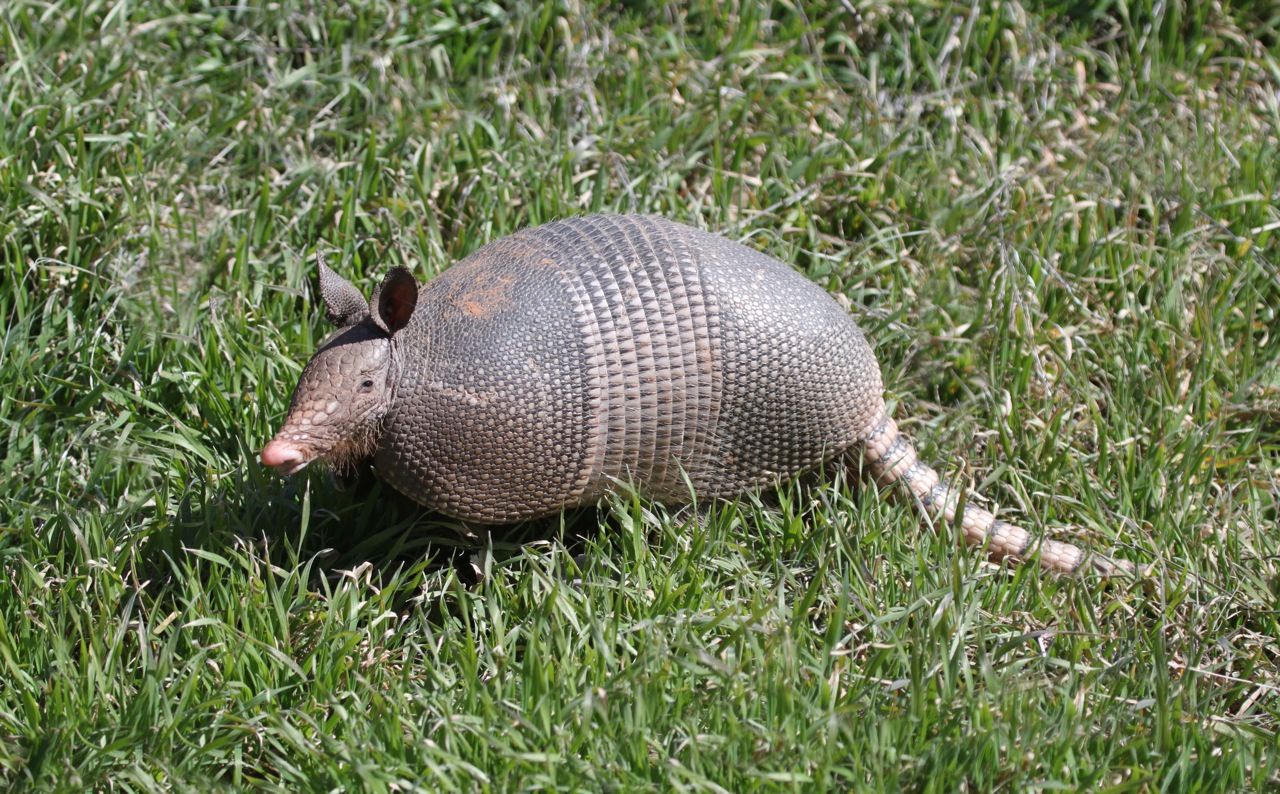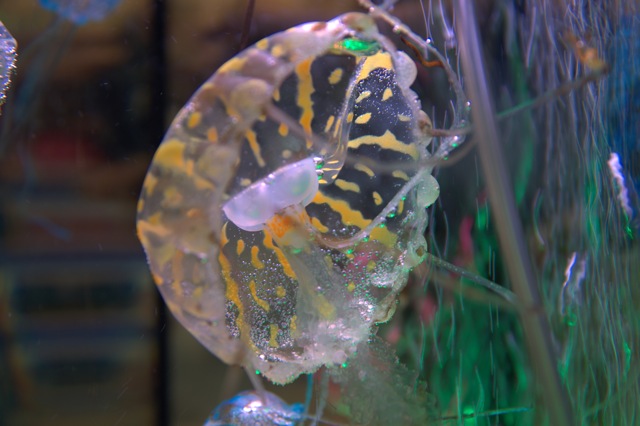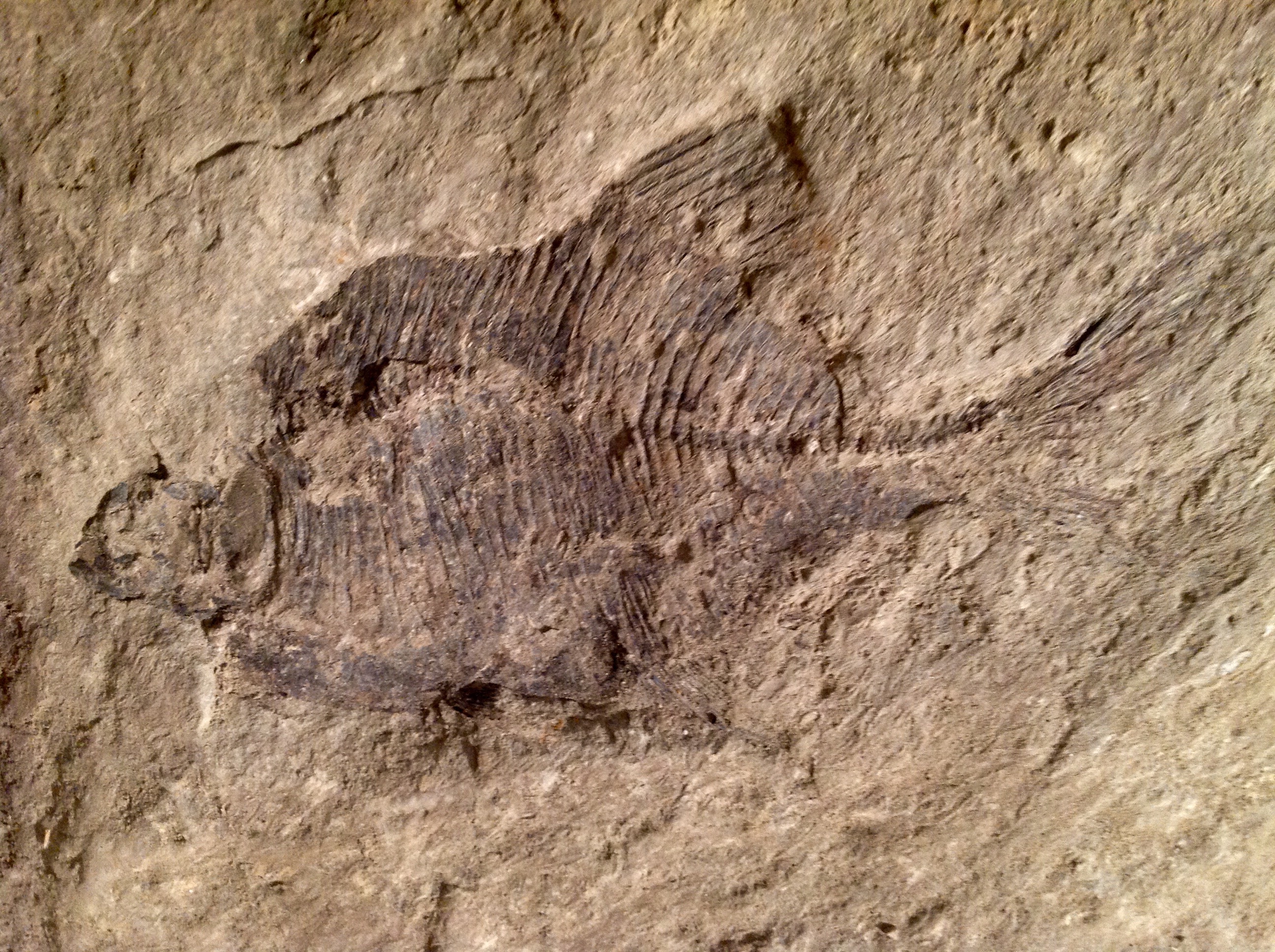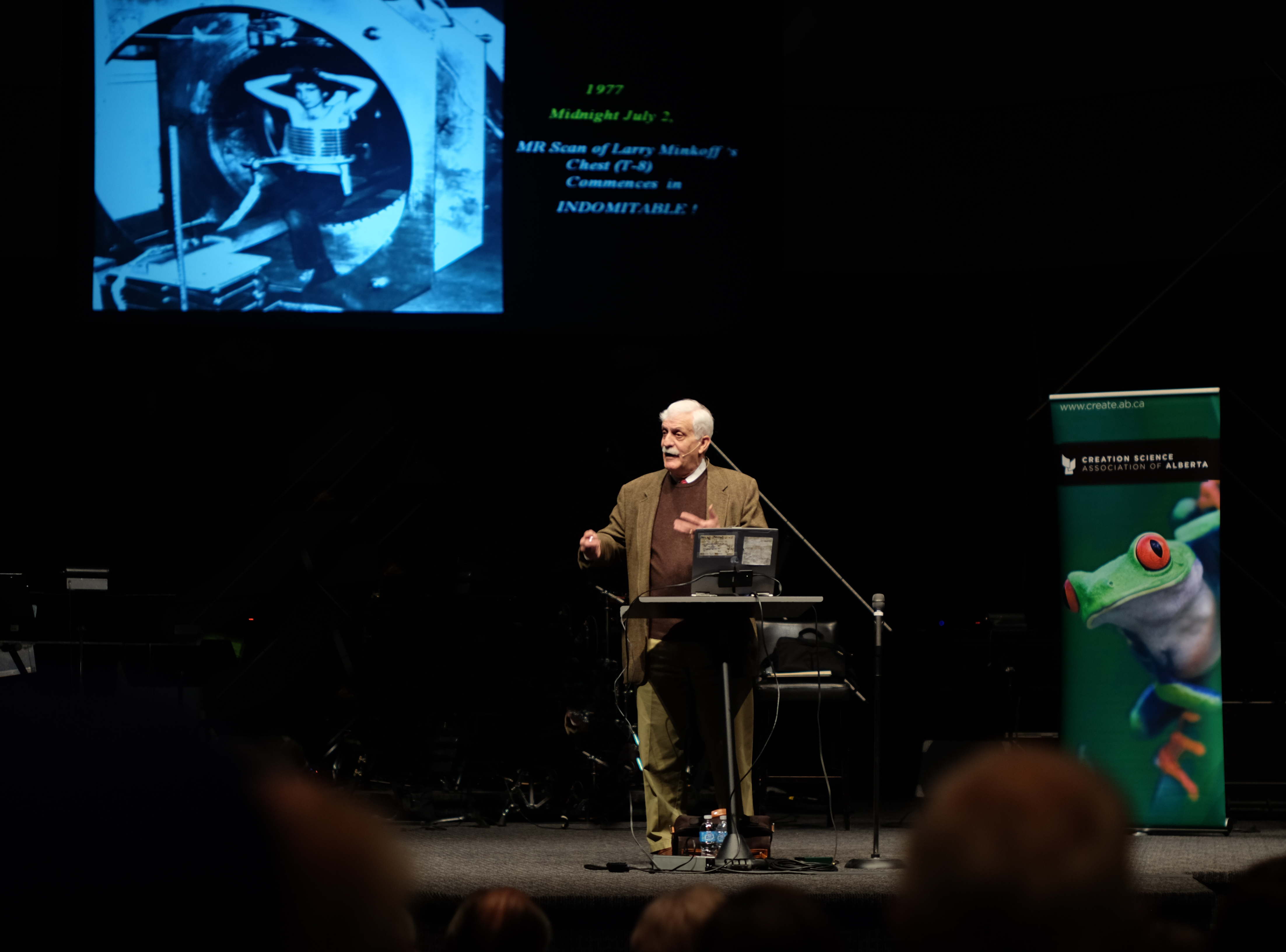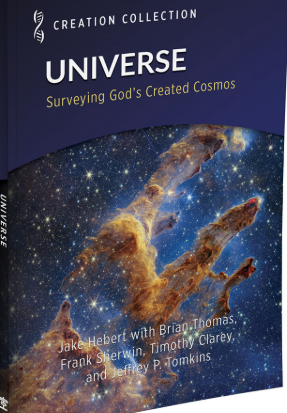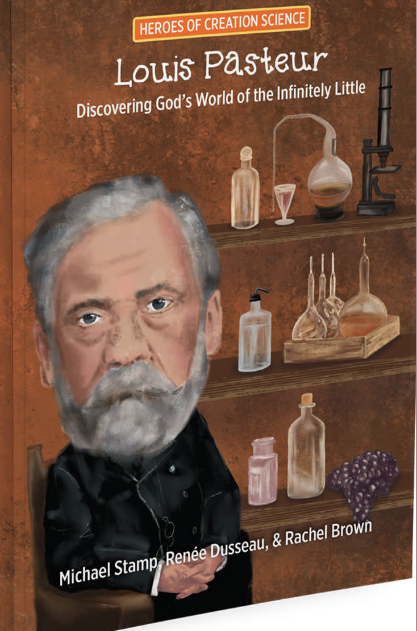Articles » Intermediate
In many parts of North American, the most common wild mammals one sees are rodents in the order Rodentia. The largest known modern rodent is the South American semiaquatic capybara, which can grow to be 107 to 134 cm (3.51 to 4.40 ft) long, 50 to 64 cm (20 to 25 in) tall and typically weighs 35 to 66 kg (77 to 150 lb). Rodents are classified in one of the most successful mammalian groups today (Churakov et al. p. 1315). Read the rest of this entry »
October 24 & 25, 2014 in Edmonton
Ever since Dr. Steve Austin earned his Ph.D. in coal geology from Pennsylvania State University, he has shared his expertise with Christians eager to understand how nature expresses what the Bible tells us happened in the past. Indeed, when it comes to geological research, Dr. Austin’s resume goes on and on, all of it exciting! Read the rest of this entry »
Among the wonders of the natural world are plants that eat animals, and the best known example is the Venus flytrap Dionaea muscipula. In Charles Darwin’s book on insectivorous plants, he described the plant and its ingenious design in great detail, but did not offer even a clue about its possible evolution (Darwin, 1896, pp. 286-320). He even called the plant “one of the most wonderful plants in the world” (p. 286).
This carnivorous plant is found growing in peaty sandy soil mainly in one small place, the extreme far east coast of North Carolina (Schnell, 2003, p. 85). It catches its prey, mostly ants, beetles, spiders and other crawling arachnids, with a complex, well designed, mitt-shaped trapping mechanism located at the terminal portion of the plant’s leaf (Ellison, 2006; Ellison and Gotelli, 2009). Read the rest of this entry »
It was in 1909 that Charles Walcott of the Smithsonian Institution, noticed an unusual fossil in Canada’s Rocky Mountains in Yoho National Park. It was the discoloured, extremely thin remains of a soft-bodied marine creature. Now wait a minute, he must have thought! What we normally find as fossils are the hard parts such as shell or bone from once living creatures. Naturally intrigued, Walcott returned to British Columbia for several summers. He found a whole collection of soft bodied creatures previously unknown to science. Read the rest of this entry »
People came from hundreds of kilometres away to hear Dr. Steven Ausin speak at CSAA’s Creation Weekend in Edmonton in October. His first lecture on Friday evening, October 24 was on the global flood model, also known as catastrophic plate tectonics. This model provides an explanation for how the earth came to its present state (as a result of a worldwide flood). The model was first proposed in a paper in 1994. There were six authors, Drs. Steven Austin, John Baumgardner, Hubert Humphreys, Andrew Snelling, Larry Vardiman and Kurt Wise (each representing different relevant technical areas of expertise). Read the rest of this entry »
During the 1960s and 1970s, improved strains of wheat and rice resulted in a doubling of crop yields. Despite predictions of disaster from some environmentalists, the world continued to feed quickly growing human populations. This green revolution, kick-started by the research of American plant scientist Norman Borlaug and Indian rice geneticist M. S. Swaminathan, provided much higher yielding crops. However for optimum growth, these crops require the widespread application of nitrogen fertilizers and other chemicals. As a byproduct of this practice, a significant amount of fertilizer ends up in natural waterways. As a result, scientists now consider the application of such chemicals as “so last century!” (Nature October 30, 2014 p. S52). The hunt is now on for crops that do not require chemical inputs and yet produce high yields. Read the rest of this entry »
Armadillos (Spanish for little armoured one) are New World nocturnal mammals covered by a leathery armour shell overlaid by horn. Of all living animals, “few are as amazing … as the armadillos” (Storrs, 1982). Even Carolus Linnaeus, the father of taxonomy, was puzzled about how to classify this “strange-looking mammal” (Smith and Doughty, 1984, p. 2). They are shy, timid mammals that mammalogist David Lamp calls bizarre (1977, p. 36). They look nothing like any other living animal, appearing much more like a fierce miniature dinosaur. These nearly blind and deaf animals must use their keen sense of smell to locate food. Read the rest of this entry »
Review of Evolution’s Achilles’ Heels (book)
Like Alice of Wonderland fame (in Through the Looking Glass), who found that she had to run extremely fast just to stay in the same place, so also it is hard to maintain an up-to-date understanding in science. The scientific journals constantly churn out new articles with new information and arguments. Keeping up to date is hard work! But it is extremely helpful to have an understanding of current issues in science and their significance. This makes the new book Evolution’s Achilles’ Heels (Robert Carter, Editor) and its companion DVD of the same title, extremely relevant. Read the rest of this entry »
There are some useful and visually attractive programs available on YouTube. For example, Privileged Species (previously reviewed in Dialogue) at 32 minutes, has already recorded 33,300 views. However for better quality display, a DVD is required which CSAA sells for $15.00 each.
Several years ago CSAA distributed free copies of the DVD Programming of Life which runs 44 minutes and is produced by LaBarge Media (with Don Johnson). We distributed this to high school and university students, teachers, and pastors. This program examines mathematical issues concerning the living cell. In this context, information is a critical feature of living cells. The kind of information required (proscriptive) involves instructions. From that discussion we proceed to protein manufacturing which is illustrated with beautiful graphics. We then learn the essential features of a computer and how the cell demonstrates these capacities. Read the rest of this entry »
The ability of fireflies to glow in the dark, delights those who have seen these insects in action. It really seems like a special talent. However a recent issue of National Geographic (March 2015) declared about bioluminescence: “Evolving to make light seems to be relatively easy — it has happened independently in at least 40 different lineages.” (p. 84) Just because we find a special talent in a number of very different creatures, does not mean that the talent was easily developed by chance. National Geographic is not aware that this unusual ability is much more reasonably explained as the choice of God, the creator. There are many examples where we can see the problem for evolution of special talents in very different creatures. And the camera eye is an ideal example. Read the rest of this entry »
Secular scientists usually do not like to mention discoveries or achievements of people who support Biblical creation. Recently however, some creation supporters have come to the attention of many scientists and even the secular media.
Mark Armitage, for example, recently published an article on soft un-fossilized tissue in one of the largest Triceratops horns ever found in Montana. Mr. Armitage had found the dinosaur fossil himself in 2012. Then in February 2013 he, along with biologist Kevin Lee Anderson of Arkansas State University-Beebe, published a technical article on this find in a mainstream European scientific journal Acta Histochemica (115, 603-608, 2013). Entitled “Soft sheets of fibrillary bone from a fossil of the supraorbital horn of the dinosaur Triceratops horridus.” The article established this find as “the first report of sheets of soft tissues from Triceratops horn bearing layers of osteocytes [bone forming cells], and extends the range and type of dinosaur specimens known to contain non-fossilized material in bone matrix.” (p. 603) Read the rest of this entry »
Creation Weekend 2015 proved to be as exciting and informative as the organizers had hoped. Dr. Raymond Damadian, of New York, inventor of the MRI scanner and founder of FONAR Corporation, provided large audiences in Edmonton with lots to think about. In his initial lecture on Friday evening, Dr. Damadian shared some of the story of how he first came to the idea for an MRI scanner and how he was able to demonstrate the effectiveness of his idea. Read the rest of this entry »
The brand new book Gifted Mind has it all: inspiring message, an exciting story with diverse characters, conflict resolution and a happy ending. This is a book that the reader will be reluctant to put down. Best of all, however, this is a true account of how God worked in the life of the amazing inventor of the magnetic resonance imaging machine (MRI). This machine has only been available since the 1980s, yet it has impacted for good the lives of millions of people.
We hear all the time about how complicated living cells are. It makes us think that such entities were designed to work as they do. People who support the idea that all things came about by natural processes, however, do not want to think that there is a mind behind what we see in all living creatures from microbes up to the largest, most complicated organisms. These latter people want to show how the living cell developed spontaneously, without any direction. So they want to demonstrate that there were early cells which were much much simpler than what we see today, cells that could have appeared through natural processes. These scientists want to demonstrate that the barriers to spontaneous development are not too high. Read the rest of this entry »
SCIENCE FROM A CHRISTIAN PERSPECTIVE
by Margaret Helder
Reviewed by: Jonathan Dykstra (Editor, Reformed Perspective)
From the title onward, No Christian Silence on Science is a clarion call to Bible-believing, six-day creation upholding Christians to stand up and be counted. It’s much more than that too. The author, Margaret Helder, has written for the Creation Science Dialogue and Reformed Perspective (the magazine I edit) for years, and if you’ve read her there, then you know Dr. Helder approaches God and His creation with awe, and teaches us how to tackle evolution without fear. This book is very much an outgrowth of that work. This, then, is intended to equip us, so we will be able to give a ready defense of our faith, and fortify us, so we will continue to trust in God, even when we face the attacks that will come in this predominantly Darwinist and secular field. Read the rest of this entry »
Order Online




